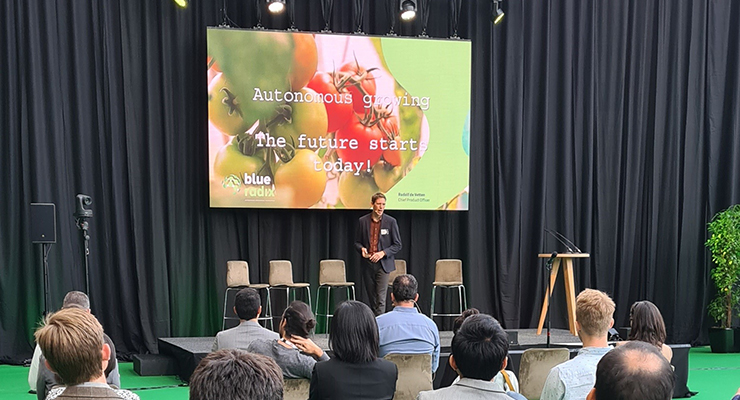
If you thought autonomous growing was a development for the future, you’re wrong: it’s a reality today. This was the message from Rudolf de Vetten, Chief Product Officer of Blue Radix, delivering a presentation in the XPERT Theatre at GreenTech Amsterdam on Tuesday.
“The number of skilled people with expertise in growing greenhouse crops is declining every year,” warned Rudolf. “This is having a direct and negative impact on yield, costs, continuity and product quality. Autonomous growing is already tackling these challenges in greenhouses worldwide. This summer Blue Radix started to control greenhouses fully autonomously with Crop Controller. Not in a demo environment, but in full-fledged production greenhouses that used to be managed by growers. This is exciting, because it means we can solve some major problems in the short term.”
The difference between data platforms and autonomous growing
In his presentation Rudolf clarified the difference between data platforms and autonomous growing. Data platforms focus on providing more insights to growers so that they can make decisions using the collected data. But while understanding your data is valuable, many companies lack growers to analyze it all. Autonomous growing completely takes over the grower’s burden of monitoring and controlling the climate-computer settings. “We don’t send the data to the grower,” Rudolf explains. “The optimal climate control is done entirely autonomously.”
Step by step towards an autonomous greenhouse
If you’re used to doing everything yourself, how can you ever get into autonomous growing? Rudolf’s advice is to proceed step by step, with each step adding even more value.
- First you can start by automating climate and irrigation control based on your unique crop strategy. Algorithms like those used by Crop Controller are very capable of calculating the optimal climate and irrigation strategy based on this crop strategy.
- The second step is autonomous observation of the crop. Sensors and vision technology are the senses of the crop. “So far we’ve seen that sensor technology is only used to a limited extent, but I expect the use of AI will also stimulate the use of sensor and vision technology,” says Rudolf.
- The third step is the application of robotics. “We see plenty of interesting developments in robotics, but there are also uncertainties as to whether robots can deal with the complexity of greenhouses and a living crop.”
He continues: “We have gained lots of experience in recent years, and we’ve been working on a scalable service so that we can offer it to growers worldwide. Right now we’re actually working with growers on five continents. The promise of autonomous growing is to manage up to 4 times more hectares while increasing the yield per hectare. In short: autonomous growing is not something of the future; it already has a lot of added value.”
Watch the recorded presentation
You can watch Rudolf’s recorded presentation on GreenTech’s virtual platform (login required).
Xpert Theatre, Tuesday, September 28, Data Driven Horticulture block from 2:50 p.m. – 4:00 p.m.
Want to learn how you can use this technology in your company? Blue Radix, specialist in autonomous growing, can tell you all about it at Greentech Amsterdam: live at stand 01.114 or online!
